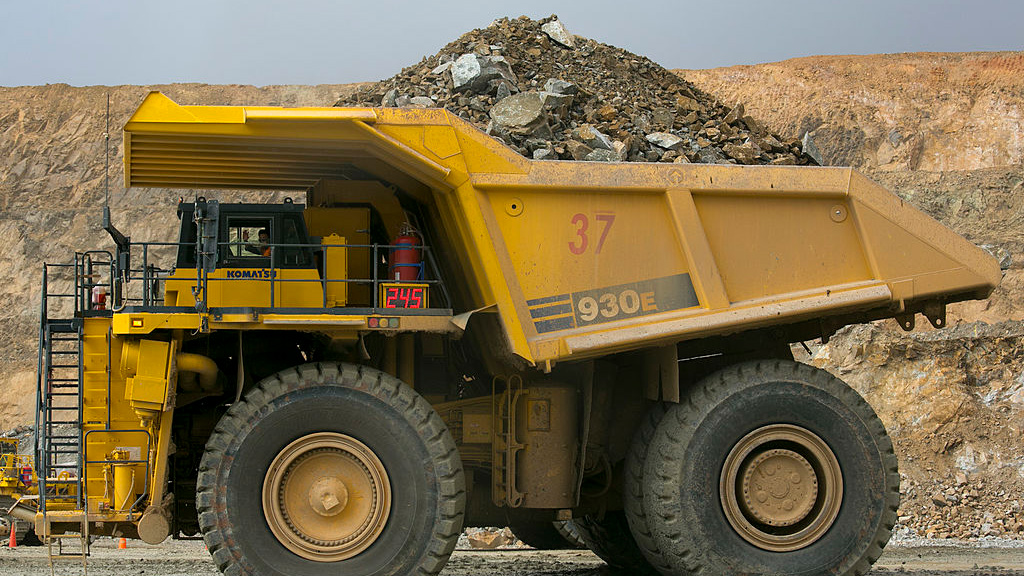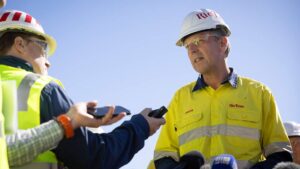Rio Tinto will spend US$7.5bn on decarbonisation this decade in clean energy shift

Pic: Paula Bronstein via Getty Images.
Rio Tinto (ASX:RIO) will spend US$7.5 billion on decarbonisation until 2030, and build in a dramatic shift towards addressing its responsibility for greenhouse gas emissions, the company said yesterday.
Rio will radically up its targets to reduce Scope 1 and 2 emissions by 50% by 2030, triple its previous target, and 15% by 2025 against its 2018 baseline of 32.4Mt CO2 equivalent.
The announcement includes plans to introduce upwards of 6GW of renewable power across its Pilbara iron ore operations and east coast aluminium smelters.
Rio Tinto decarbonisation
Rio will spend an extra US$500 million each year between 2022 and 2024 on decarbonisation initiatives and double growth capex to $3 billion from 2023 to target investment in commodities needed for the energy transition.
However, it still plans to ramp up its iron ore business, which has suffered years of missed guidance and underperformance, to 345-360Mtpa.
The announcement came along with a pledge from Rio Tinto chief executive Jakob Stausholm at an investor seminar in London yesterday to improve its operational and ESG performance in the wake of not only missed guidance and blowouts across its business units, but also the fallout from the Juukan Gorge debacle in 2020.
The blasting of the rock cave containing 40,000 year old Aboriginal artefacts sparked international outrage and led to the cleaning out of Rio’s upper management, including previous CEO Jean-Sebastien Jacques.
“We recorded the best financial results in Rio Tinto has history with net income of US$12.2 billion and a return on capital employed of 50% demonstrating the strength of the amazing portfolio of assets Rio Tinto has built over many decades,” Stausholm said.
“However, our operational performance this year has not been good enough. We must address this and we absolutely will.”
“We will approach this in a systemic, sustainable way, not taking shortcuts.”
Where is Rio targeting reductions?
The Rio Tinto decarbonisation effort will see the company begin a “rapid deployment” of 1GW of wind and solar across the Pilbara, which it says will abate 1Mt of CO2 and enable the early electrification of mining equipment.
It is aiming to shift from fossil fuels, including gas, and fully electrify the trucks, mobile equipment and rail operations, but that will “require further gigawatt-scale renewable deployment and advances in fleet technologies.”
Its aluminium smelters on the east coast — some of the most energy intensive industrial factories in Australia including Tomago, New South Wales’ largest energy user — will see the deployment of around 5GW of wind and solar to move from coal-fired power.
Around 60% of the world’s aluminium production is powered by coal, with Rio’s aluminium smelters and the Gladstone Power Station accounting for around half of its electricity emissions and 27% of its Scope 1 and Scope 2 emissions.
With money flowing into green initiatives will it impact yield?
One of the unusual phenomenons of major mining stocks in recent years has been their emergence as yield plays.
Historically prone to filtering money through to growth projects to expand and sustain resources and reserves with limited mine lives, resources companies have not always paid out dividends as well as other sectors.
That picture has altered dramatically as a growing focus on costs and record commodity prices have powered mega payouts from top miners.
Rio’s interim dividend of US$9.1 billion it recently paid out was bigger than any full year payout it has ever issued.
With more money heading into projects to reduce its emissions (and iron ore prices looking unlikely to pump above US$200/t again any time soon), RBC analyst Kaan Peker says investors can expect lower yields.
However, he also said the transformation to lower emissions is a “much needed shift in strategy”
“This series of moves provides a substantial, and in our view, much needed shift in strategy, which we think is a positive over the long term,” he said.
“Lower emissions and more growth and diversification should help to assist the Rio Tinto investment case. Much like the challenges the world itself faces in the decarbonisation transition, hard choices need to be made and the transition is likely to be difficult and add uncertainty.”
“The current investment case for Rio Tinto has been dominated in recent years by its attractive yield. This transition towards more spending at a time where the prospects for iron ore cash generation look challenged will further complicate this transition, as this will happen in a lower-yield environment (our base case 2022 FCFY is ~5%).”
“So although we think this is the right strategy it may take a significant amount of time for the shares to reflect this. We continue to prefer BHP in our Aus diversified universe.”
Rio Tinto share price today:
Related Topics
UNLOCK INSIGHTS
Discover the untold stories of emerging ASX stocks.
Daily news and expert analysis, it's free to subscribe.
By proceeding, you confirm you understand that we handle personal information in accordance with our Privacy Policy.








